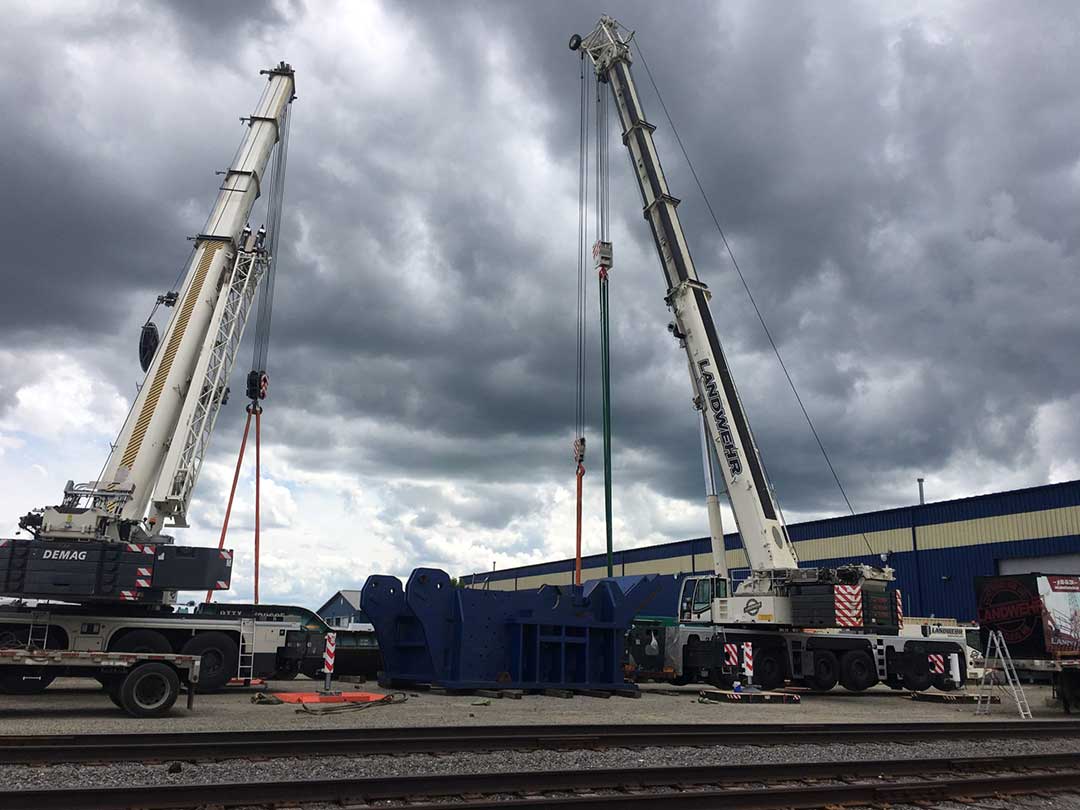If you’ve read our post on the history of cranes, you know they’ve been around for quite a while. Primitive cranes were constructed simply, from compound pulley systems, and powered by the strength of humans or animals. Thankfully, cranes have long-since been mechanized, and we no longer have to lift heavy loads with our own brute strength; however, modern cranes now require a more complicated construction process.
Materials
Because they need to be trusted to lift immense weights, high-strength low-alloy (HSLA) steels are the primary material used in crane construction. Not only are they easier to weld, but these steels contain a low level of carbon, which increases their durability. They also include elements like chromium, titanium, and nickel to further enhance their strength, and they’re extremely resistant to corrosion, increasing the overall lifespan of the crane.
Other materials used in construction depend largely on the type of crane being constructed, but bronze and aluminum are commonly used for other structural elements. Electrical components like circuitry and wiring form the innerworkings of the controls, and strong plastics are used for other parts inside the cab. If the finished crane will be mobile, rubber is used to make the tires.
Manufacturing
Lime, coke, and iron ore are melted in a blast furnace to create molten steel, and oxygen is flushed through to remove carbon and other impurities that would compromise the steel’s strength. The steel is poured into molds, where it cools and hardens into ingots.
The ingots are shaped into various forms—plates, bars, rods—with immense pressure from massive rollers, then are cut to size based on the specific design requirements. The hollow tubes used to form the crane’s boom are made by welding the sides of a flat steel sheet together or by piercing through the center of a steel rod. Long rods are thinned with dies to create wires, which are combined and twisted to form the crane’s cables.
The parts are packaged and shipped to a crane manufacturing company, where further metalwork is done to shape the parts into their desired forms.
Assembly
The specific assembly of the crane, again, depends on the type of crane; mobile cranes need to be affixed to a crawler or truck, while tower cranes may need to be partially constructed on the job site. The different elements of the crane are bolted and welded together to create the finished product.
Because of the nature of their work, cranes need to be thoroughly tested with and without weight to make sure they’re properly functioning. If and only if the crane’s operation meets the standards set by OSHA and the Crane Manufacturers Association or America, the crane is approved for use. It is sent to a job site or construction company, either shipped whole or in several parts that will be assembled upon arrival.
Landwehr Construction’s cranes are valued for both their safety and strength. Our equipment is regularly inspected by trained team members, and the welfare of our employees and customers is always paramount. For equipment you can trust to get the job done right, call Landwehr Construction at 1-800-456-1284 or visit us online.

